I detail the make of WiFi Robots, with first person video, sensory feedback, and actuator control, from ‘toy hacked’ remote control toys.
WiFi FPV Robot 1
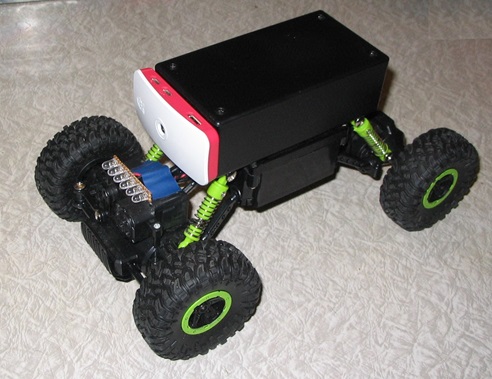

WiFi FPV Robot 1, featured above, is built upon a 2.4GHz RC Rock crawler chassis. The fitted Raspberry Pi Zero W streams video to an HTTP browser session, from which the operator can gain status feedback, and control motors and lights with a game controller.
The project was unique, in that it successfully employed dc brushed motor Back-EMF measurements, for fine motor control. The inbuilt Arduino 328P Nano, is tasked with motor feedback sampling and PID control, motor PWM outputs, as well as lighting control, status assessment and reporting.
WiFi FPV Robot 2 (WIP)

The plan is to acquire a mecanum wheeled version of the un-branded RC Rock Crawler used in V1, and convert it using many of the same techniques and technologies employed previously.
The updated mecanum rc toy runs a AUD$55 investment, though?
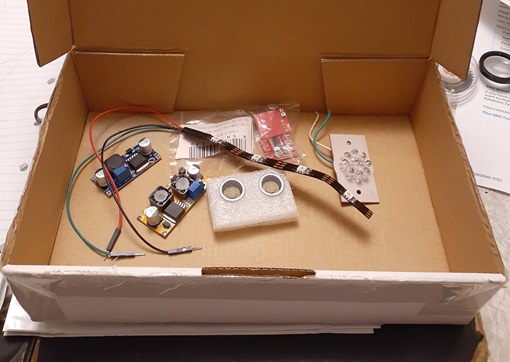
11/04/2024 – Component accumulation ensues…
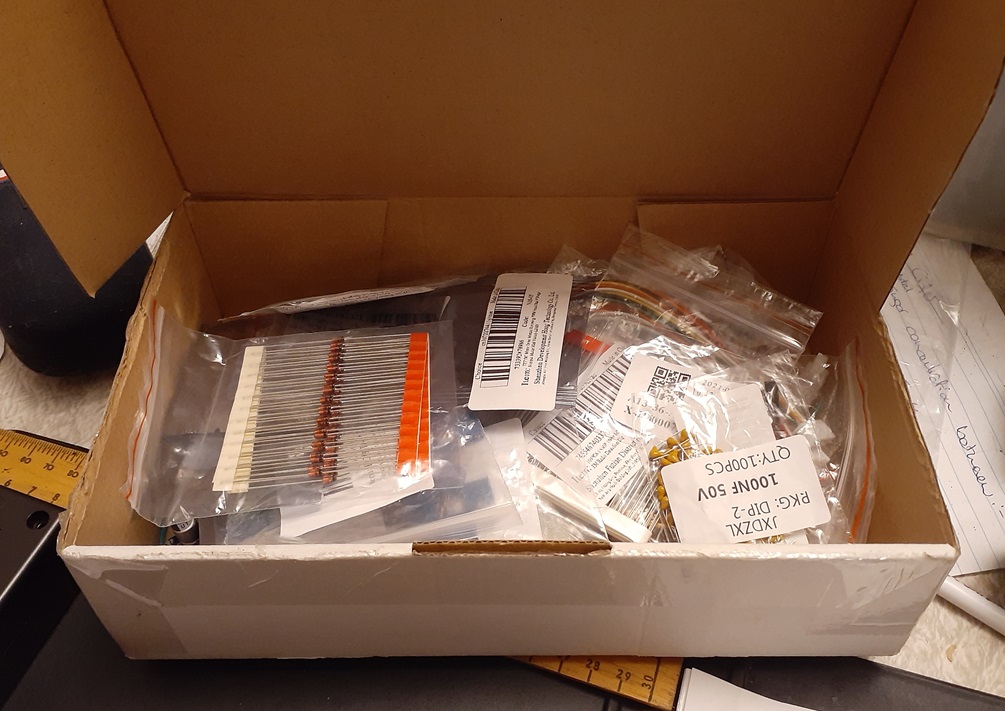
22/04/24 – Parts still amassing.
ARDUINO COMPONENT
Interested in Raspberry Pi and Arduino robotics? Why not check-out my Arduino I2C Slave Peripheral Paradigm? There’s a brief write-up on how to use it, as well as sample code to download.
23/04/24 – The front connector for a Raspberry Pi 2W.
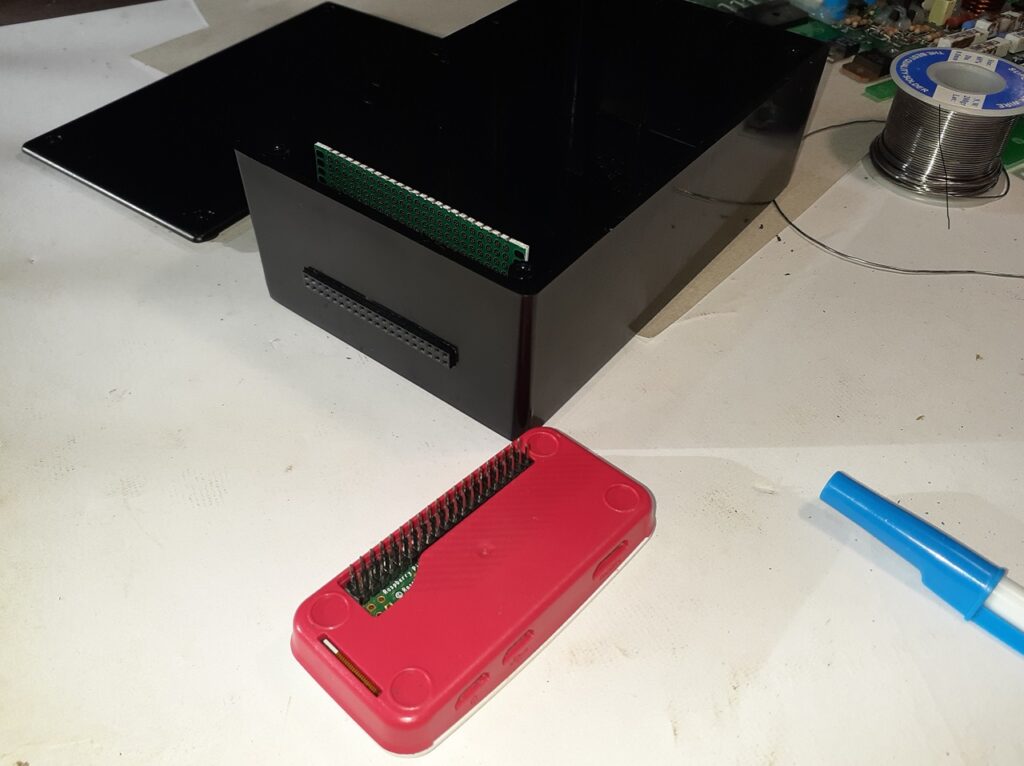
24/04/24 – That’s I2C and power to the Pi Zero 2W, and an unpopulated IDC header to wire any remaining Pi pin, if ever required.
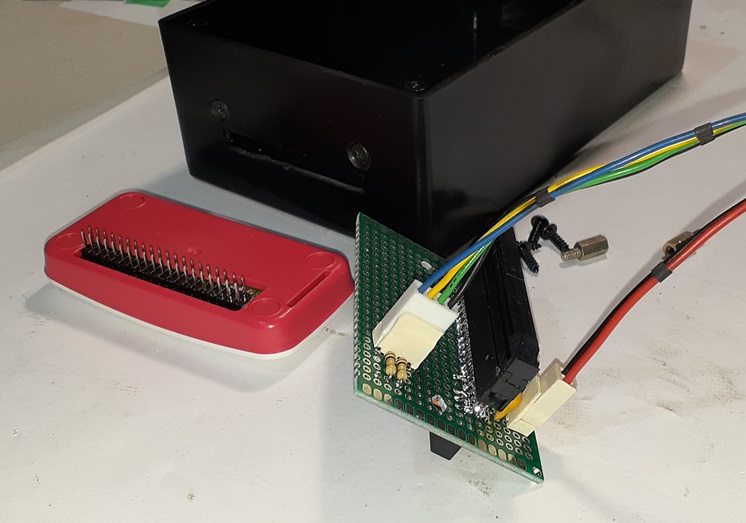
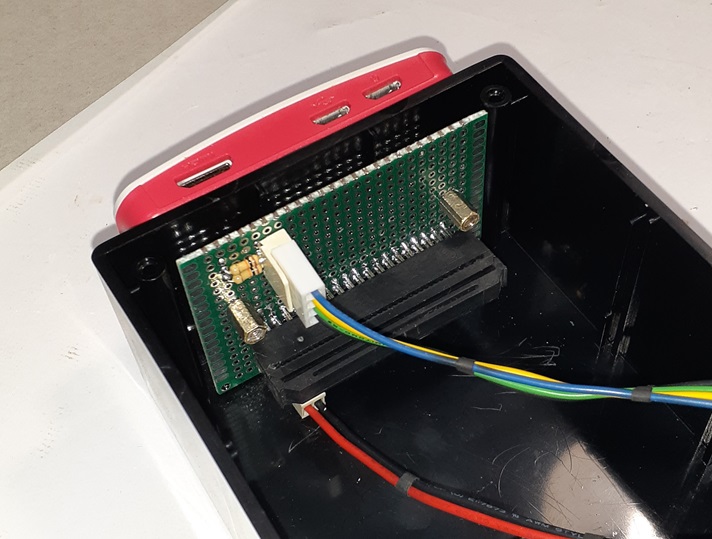
26/04/24 – The autopsy commences. I will measure motor currents first, before gutting, then build the electronics bay up large enough to accommodate PSUs, H-Bridges, and feedback signal conditioning. – Loaded motors current was ~2A or more. I’ll be splitting that between dual 1.5A supplies. The remaining half ampere on each, is exhausted by CPU and microcontroller power on one converter, and by more extensive lighting on the other.
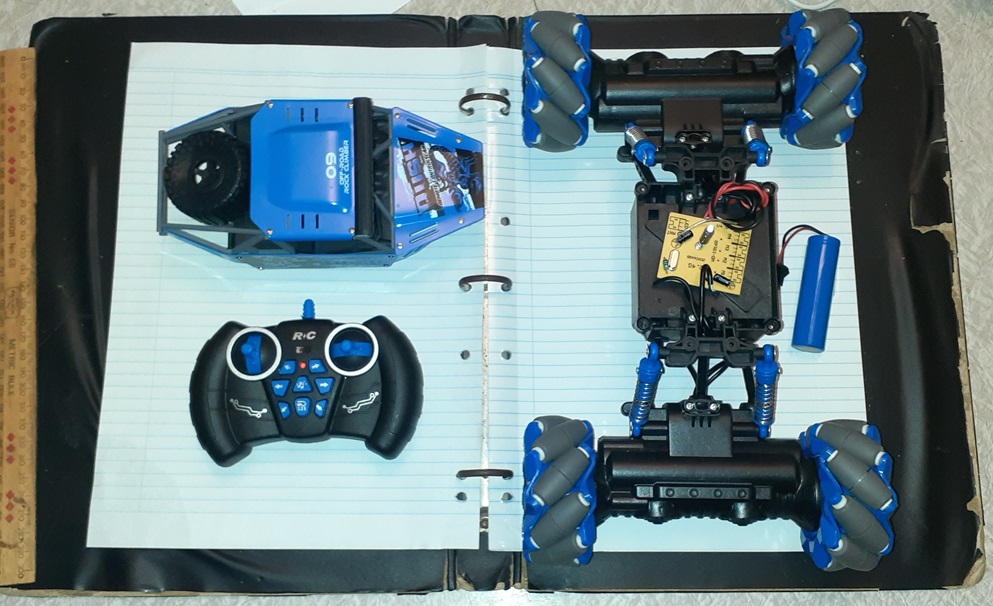
27/04/24 – Four motors, means 4 signal conditioner circuits. They rectify, filter, scale and clip, motor back EMF signals for ADC conversion. This is the signal we use to control engine power, using PIDs. Perf board turned out to be a good choice, and the whole board was done in 2 hours, or so. Used less space than budgeted.

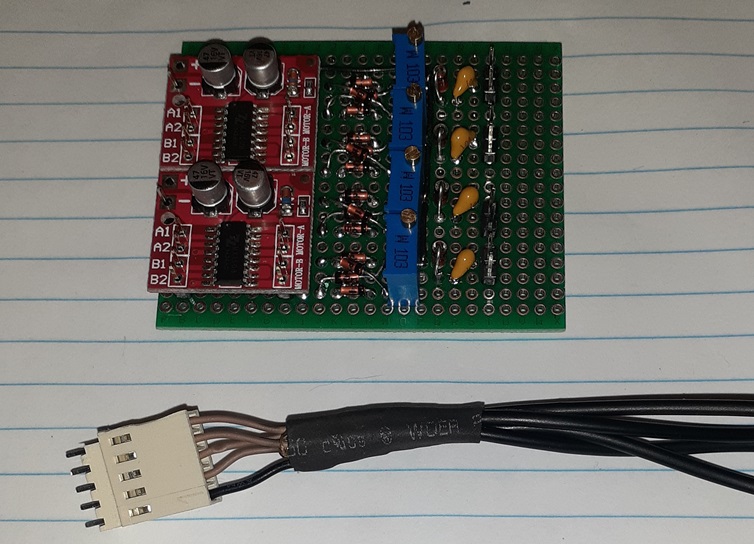
28/04/24 – 65-degree field of view, 5Mp OV5647 camera, gets a 120-degree FOV lens upgrade, courtesy of a cheap OV2640 donor camera. On the second attempt, I sanded the square flange right off the donor’s lens mounting ring. With SuperGlue, I tacked it to the old lens mount, where it’s lens ring had been sanded away. A final skin of epoxy, secures the 2 lens fixtures together, as well to the camera image sensor. The result was flawless.- I couldn’t find a wide angle lens equipped camera, for my Pi Zero 2W’s in-housing v2 camera, so I made one…hacking defined.
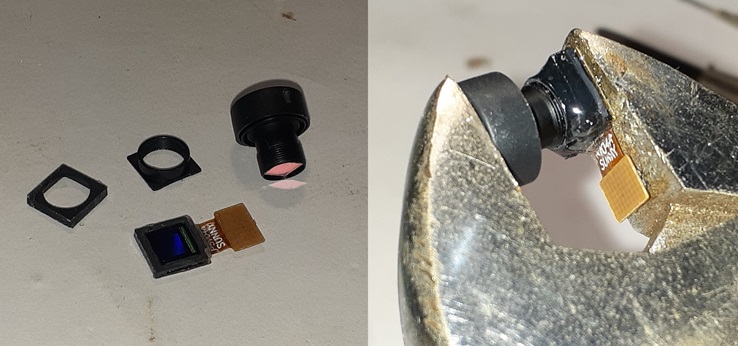
28/04/24 – Twin 1.5A Buck Boost power converters installed in the battery compartment. Loads of room for the H-Bridge and signal conditioner above.
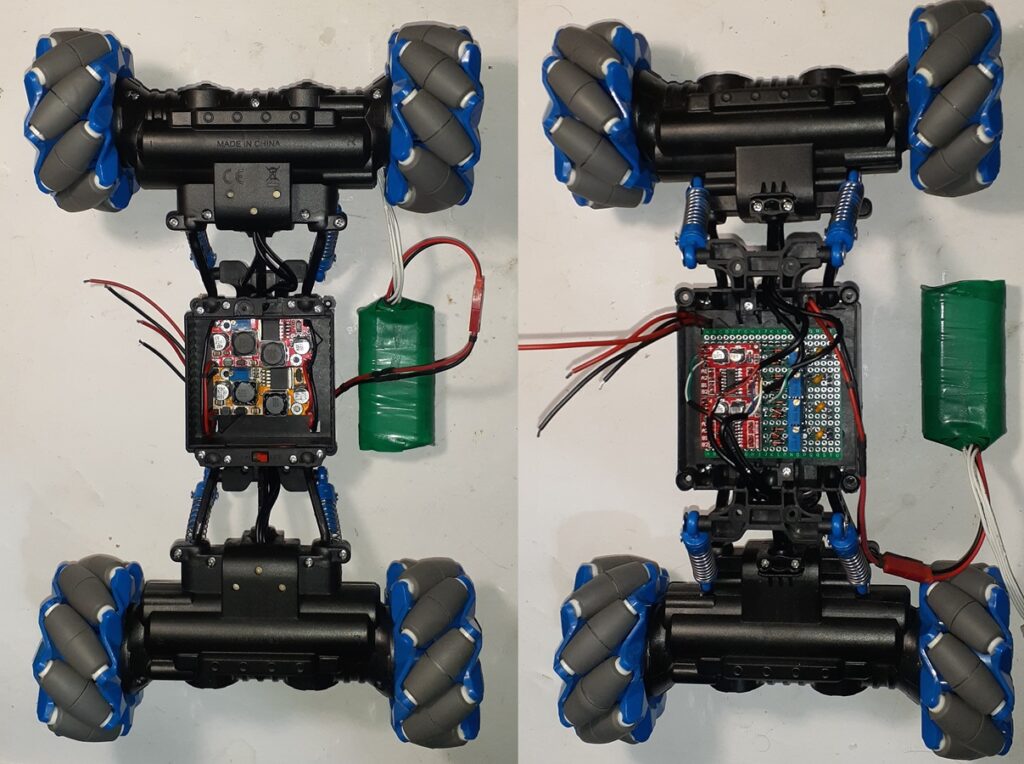
ARDUINO COMPONENT
I’ve just finished the Arduino I2C slave peripheral code, which I’ll be using soon, and you can see the full write-up, and download the demo source over here.
As a foundation upon which to build register-oriented, I2C applications. These, typically in the control and data acquisition genre. The solution I provide in ‘Arduino I2C Slave Peripheral Paradigm’, is a good choice to build your application code over. The user implements both data source and data sink application functions, and link these to the underlying, emulated register set. The methods are fully documented, and the code has been ‘hardened’, during intense peer review.
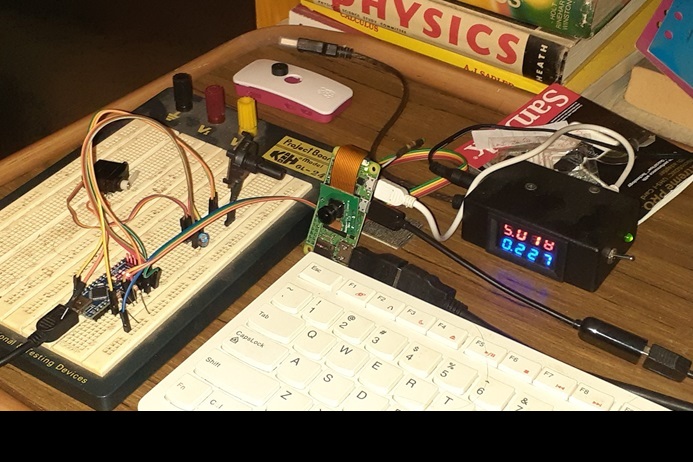
Side and Rear Lights
30/04/24 – Marking, then carving up the enclosure; 8 square holes, mounting and wiring of 8 LEDs.
More WS2812 lights coming, for a total around 300mA. Adding in the original toy’s underbody lighting, will draw another 30+mA, as they’re being overdriven.
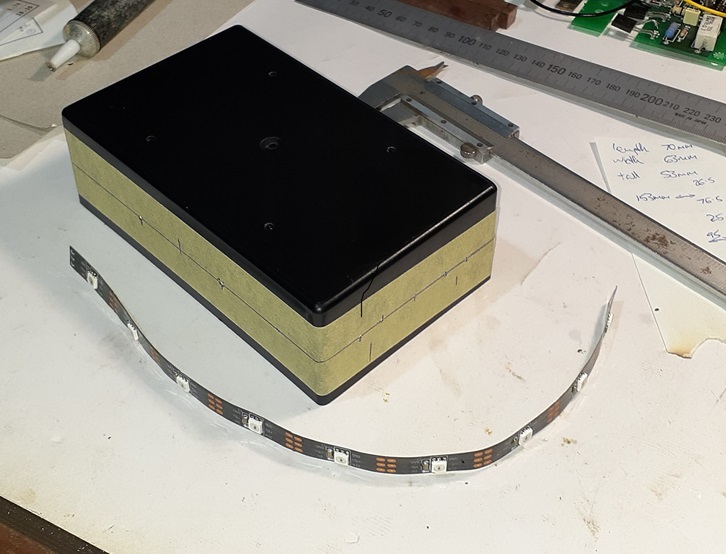
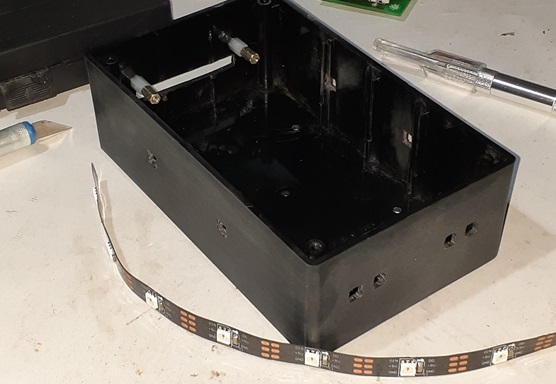

Body on Chassis
30/04/24 – Saw-milled dowel from a hardwood plank, to make the body/ chassis interstitial rails. Drill press used to bore the 4mm holes.
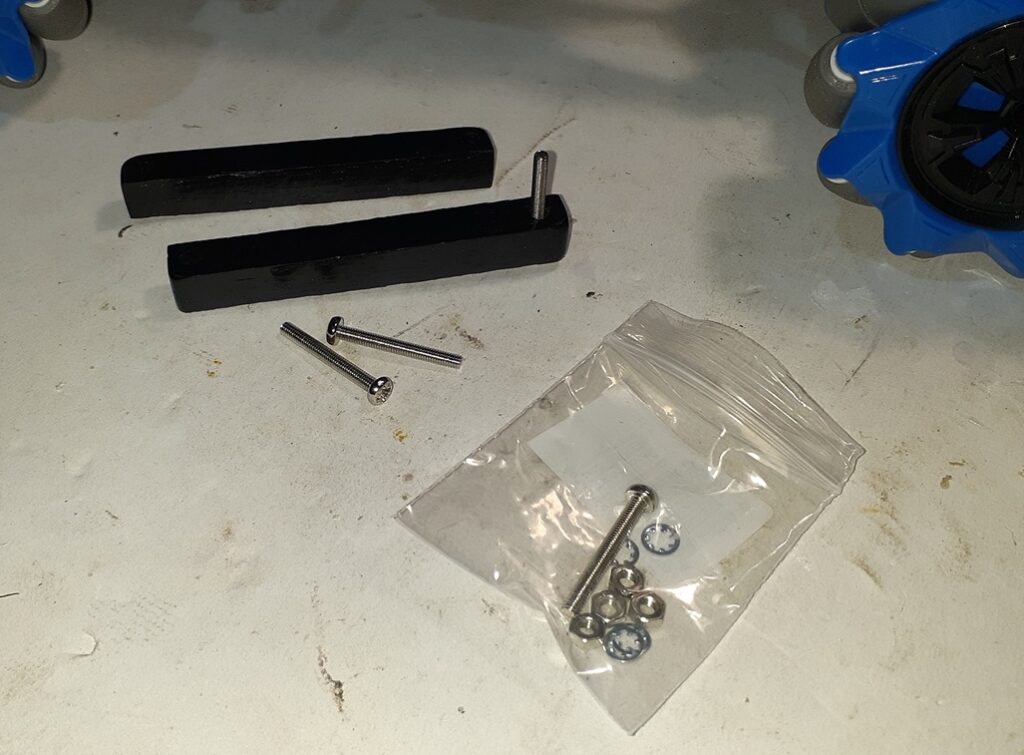
Everything fits, some polishing to do.
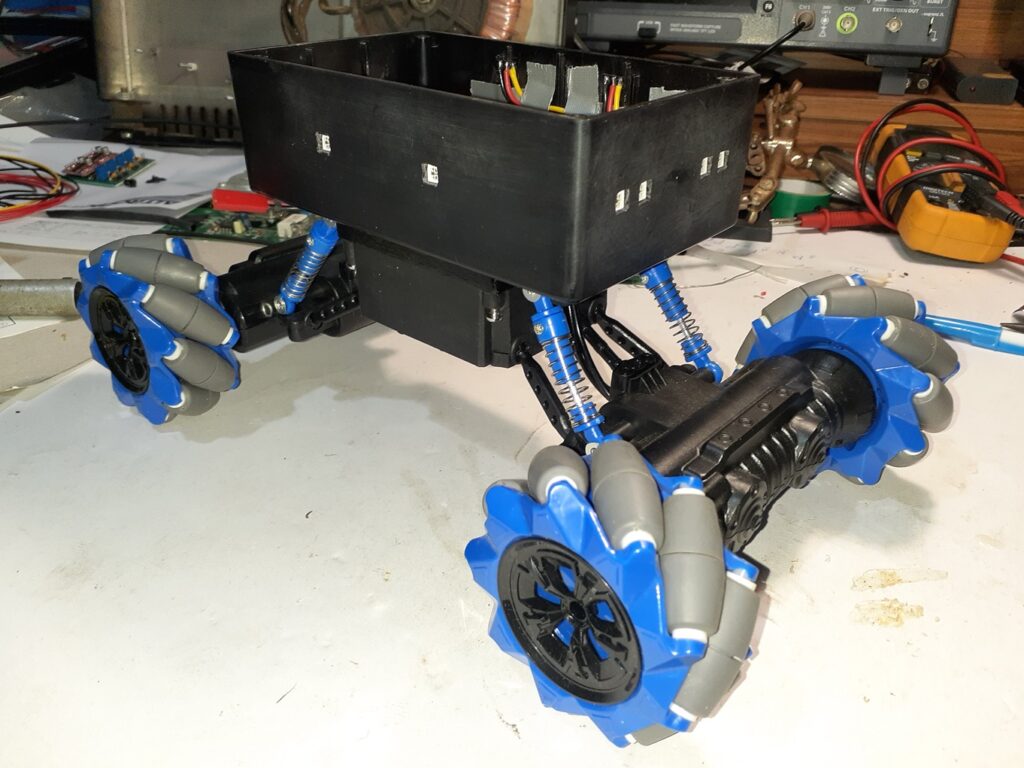
STM32F103C8T6 Blue Pill
I’ve been using an AT328PB microcontroller for development up to this point. It has decided to refuse to fully connect and program now, so I’m done with that device. It was never really suited to running 8 PWMs, and was looking like too much bother, anyhow.
So, now I’m looking at STM32F103C8T6 Blue Pill board, making sure which pins are available to run things like PWMs, DACs, etc.
Blue Pills were once a pain to work with, though ST’s USB Bootloader, has made it pleasure (but a setup hurdle).
15 PWM outputs!!! Buckets of CPU to run the 4 PID loops. Hope everything else works out.

Slave development and wiring
2/05/24 – Got code for an I2C slave with servo and potentiometer working. Different Servo library. Got Neopixel drive working, with a different STM32 library.
Will try to bring the full set of peripheral hardware up on the Blue Pill later tonight. So far, it’s looking good for application fit.
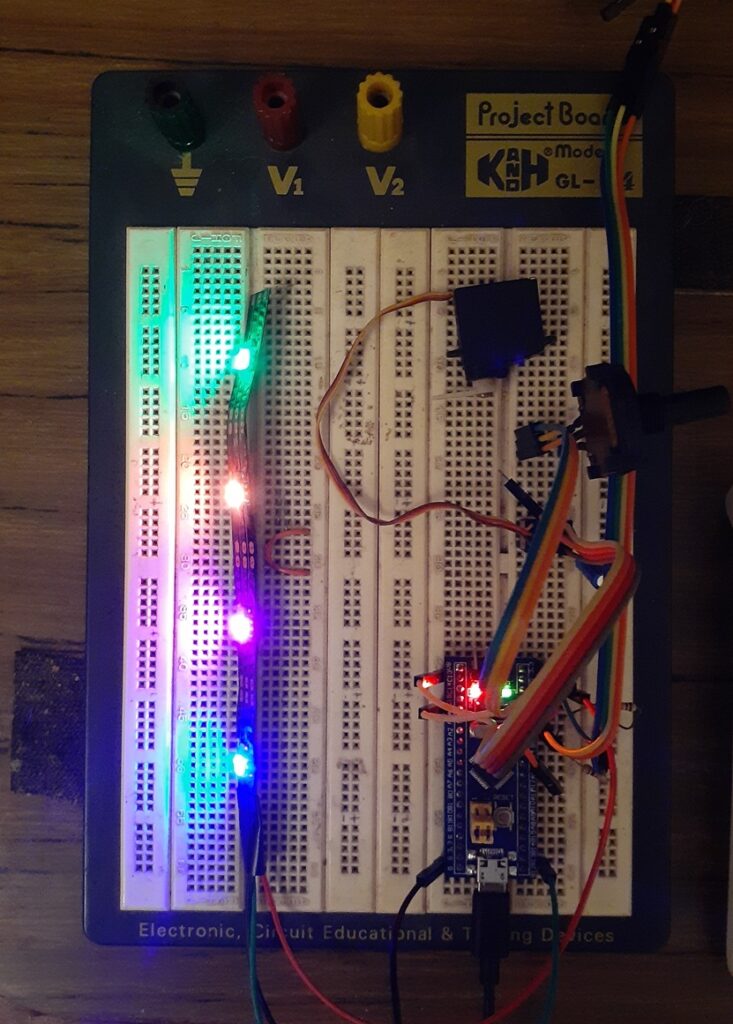
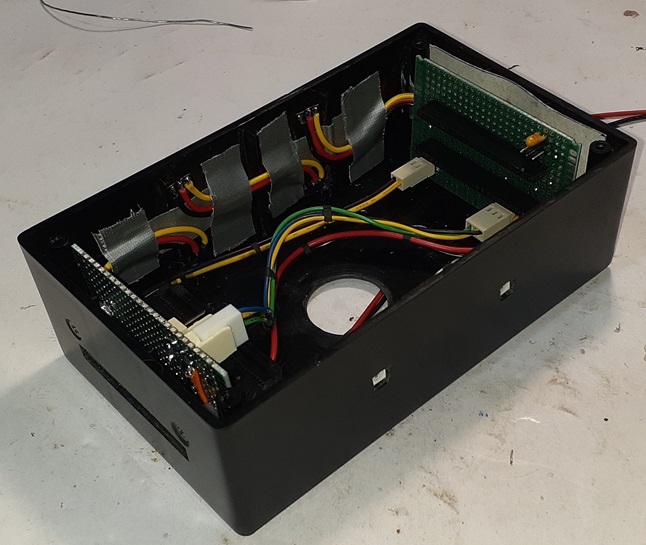
3/05/24 – Can now get 8 PWM outputs with Arduino calls, but only at 1kHz, and only on 8 of the 10 ADC inputs. We need 5 ADC inputs, so have to setup alternate PWM hardware myself.
Now, can get 5 PWM outputs, from 7 in non ADC group, to work. 2 taken by I2C. Need to figure out how to drive 4 reversible motors, using only 1 PWM for each. That’s extra logic to design and build.
Neopixel module looks great, but makes my I2C unstable. !
Extra logic
To drive the 8 H-Bridge motor inputs, with just 4 PWM outputs, we need some extra logic. Octal gated switches, to be precise.
Oh, how we love to hand wire daughter boards.
Slave Motherboard gets a Daughter
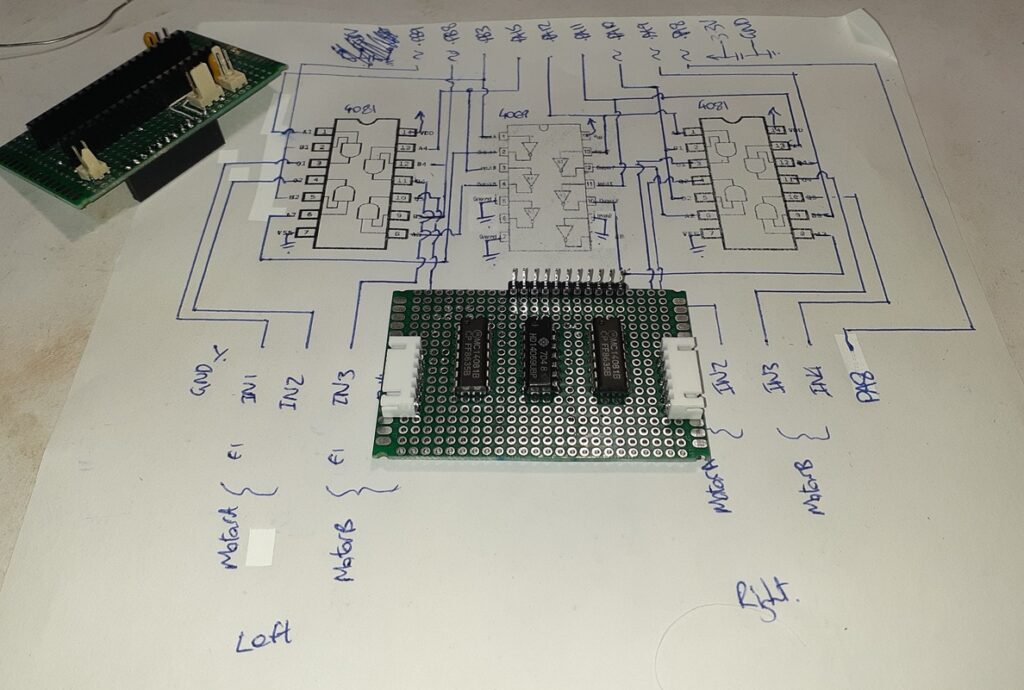
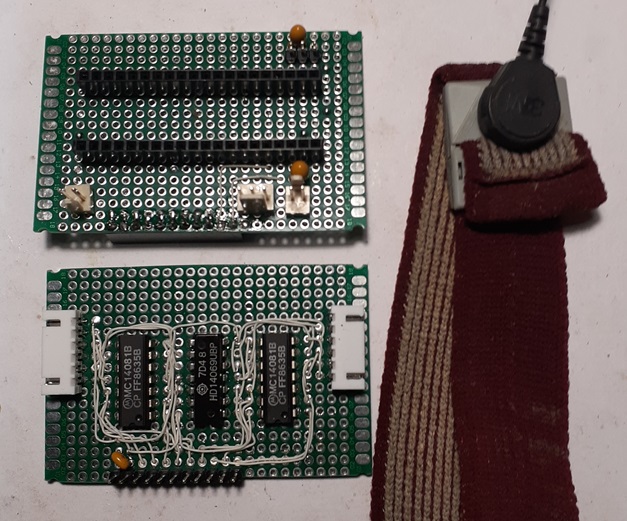
5/05/24 – Have the Octa-Switch tested, debugged and fully documented.

7/05/2024 – Got the Slave Controller’s Motherboard likely finalised, and then documented.
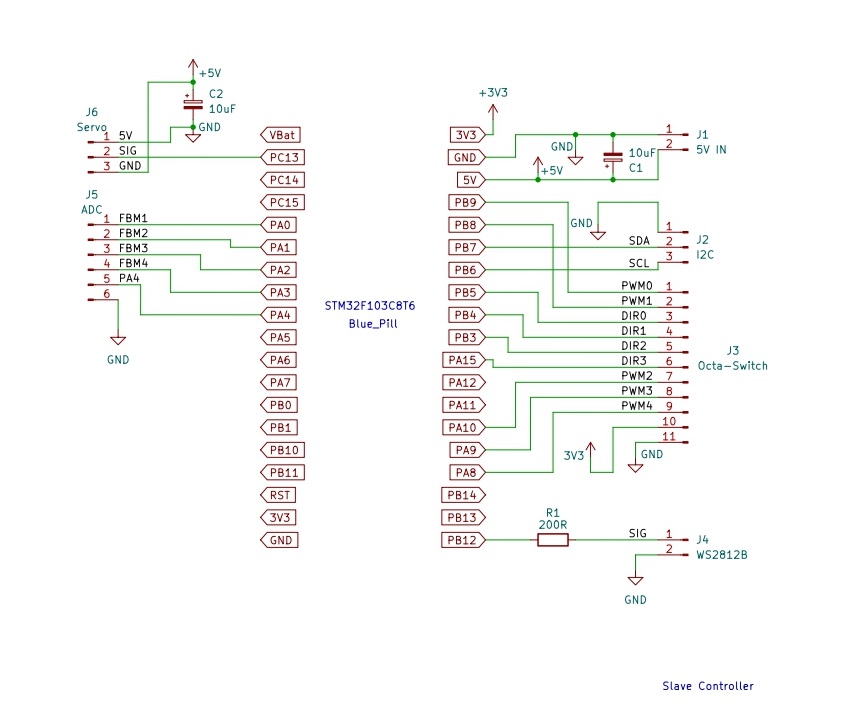
7/05/24 – FastLED refuses to work on the Blue Pill. Might be able to fix AdaFruit’s NeoPixel code, and stop it crashing I2C, but my STM32F103C8T6 Blue Pill Board has gone to heaven. Replacement board will have double flash size, and get here in ~12-days. Kind of a spanner, but I can re-order loads of other tasks.
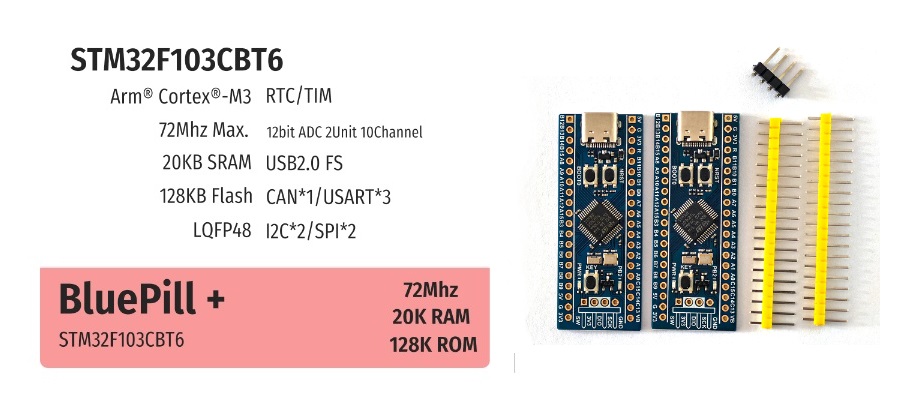
8/05/24 – Blue Pill remains intermittent. WS8212 Neopixel for light bar arrived. Tested, and fortunately compatible with other LEDs. Wired-up, so that’s just the H-Bridge/ signal conditioner PCB to finish wiring.
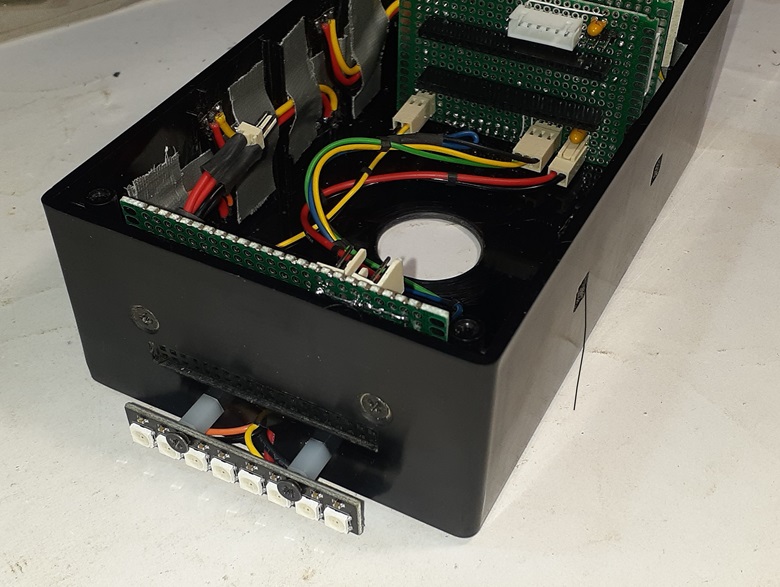
All basic internal wiring complete, enough to run CPUs, motors and lights. Won’t power-up, so some tracing to do. Back to the dodgy bootloader problem first. Several bootloader options, dunno which is best.
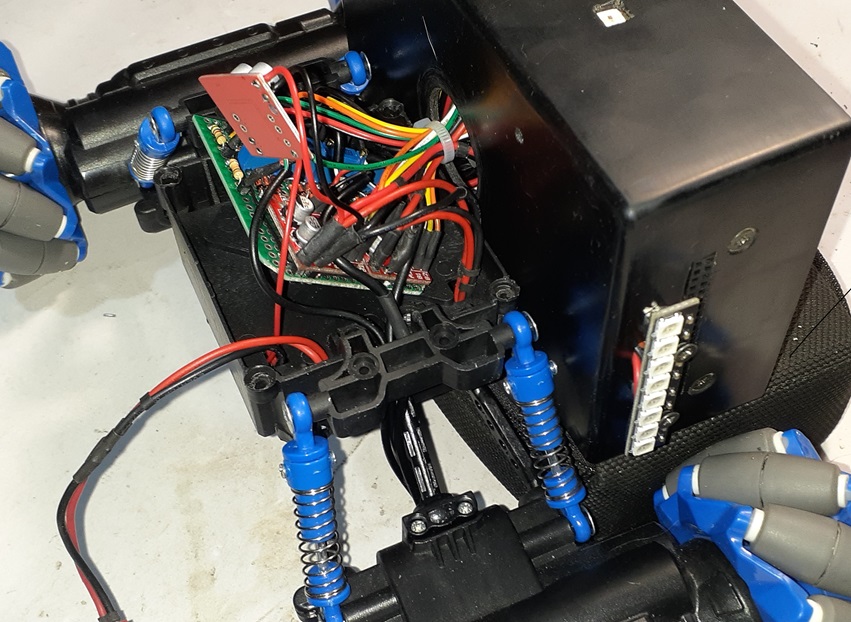

9/05/24 – Given up on USB bootloaders, in favour of an ST-Link v2 USB debugger.
First light from all 16 NeoPixels, photo does no justice.
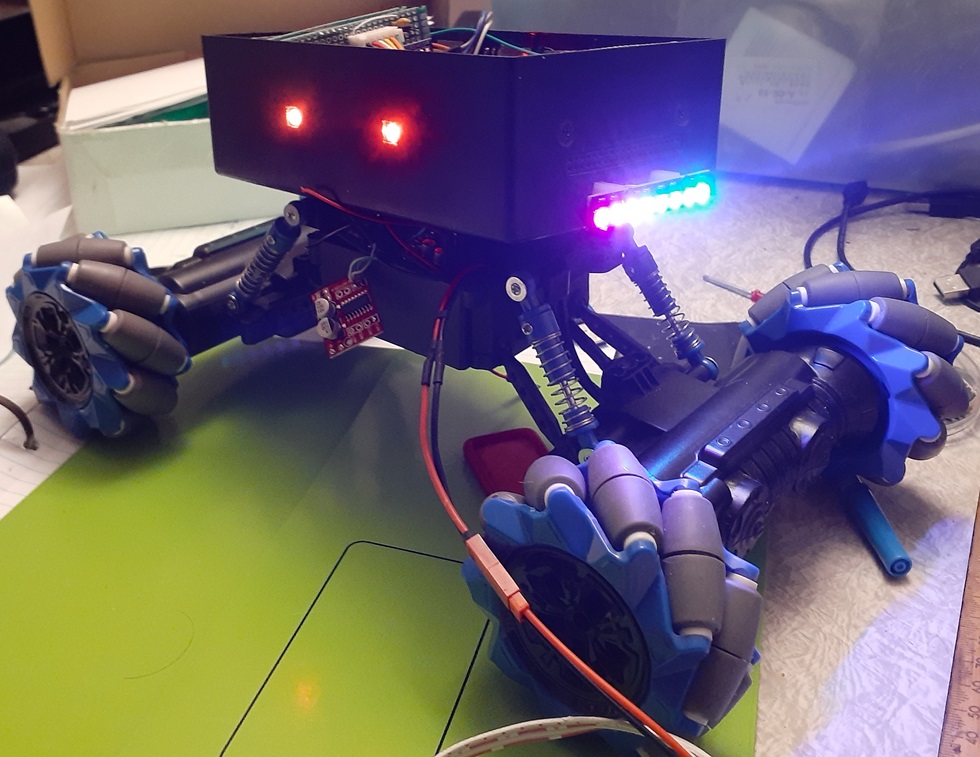

TokenismArduino
Hi Tony,
Well, I’ve just run myself ragged for the past 2-weeks, writing, documenting and having peer reviewed, Arduino.
I’m sorry that you may have missed the link to that effort, which appears in all too small writing above, where you can read the documentation, and download the demo code.
For building control and data acquisition applications via I2C, then the solution I provide in an ‘Arduino I2C Slave Peripheral Paradigm’, is a good choice. The methods are fully documented, and the code has been ‘hardened’ during intense scrutiny.
M.